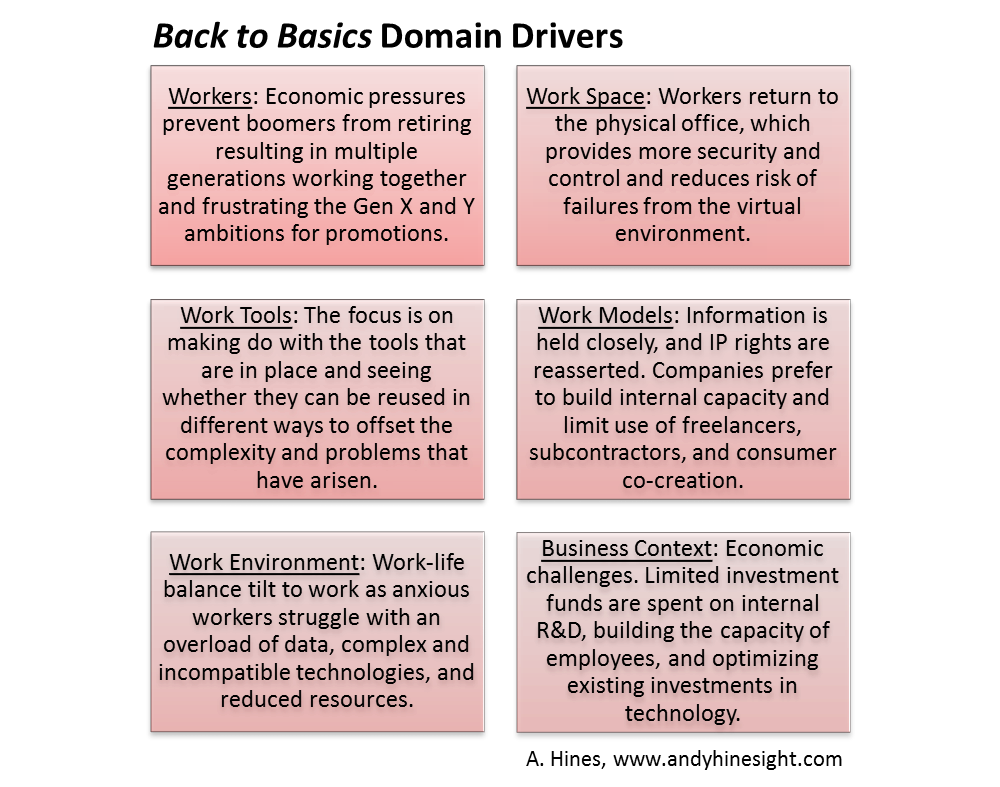Back to Basics describes a “collapse” scenario archetype [see description below]
Innovative approaches to knowledge work are put on the back burner as tough economic times and high-profile security breaches call new modes of work into question. “Back to basics” becomes the mantra.
 Organizations have been through a lot: the Great Recession (and a slow recovery); adjusting to new generations in the workplace and the conflicts this causes; and the need to integrate a constant stream of new tech tools—which often fail to provide a return on investment. To make matters worse, a series of high-profile security breaches in 2013–14 call into question recent investments in cloud computing. Decision makers begin to feel as though the benefits of “living and working in the cloud” may have been hyped, and the shift to new modes of work pursued too aggressively given the state of Internet security.
Organizations have been through a lot: the Great Recession (and a slow recovery); adjusting to new generations in the workplace and the conflicts this causes; and the need to integrate a constant stream of new tech tools—which often fail to provide a return on investment. To make matters worse, a series of high-profile security breaches in 2013–14 call into question recent investments in cloud computing. Decision makers begin to feel as though the benefits of “living and working in the cloud” may have been hyped, and the shift to new modes of work pursued too aggressively given the state of Internet security.
Management also begins to exert more control on information and decision making, further refocusing operations on the traditional office. There is less of an appetite for experimenting with virtual teams and work—and frankly less of a need as physical workspaces and teams come back into vogue.
The knowledge work scenarios were developed using the scenario archetype approach* describes typical patterns of change in a “system” (in this usage, roughly translated as “the way things are currently done). Let’s briefly review:
- Continuation: The system moves forward along its current trajectory. This is the “official future” and usually considered most likely.
- Collapse: The system falls apart under the weight of “negative” forces.
- New equilibrium: The system reaches a balance among competing forces that is significantly different from the current balance.
- Transformation: The system is discarded in favor of a new one with a new set of rules
*originally developed by Jim Dator and the Hawaii Futures Studies program — Andy Hines
Leave a Reply